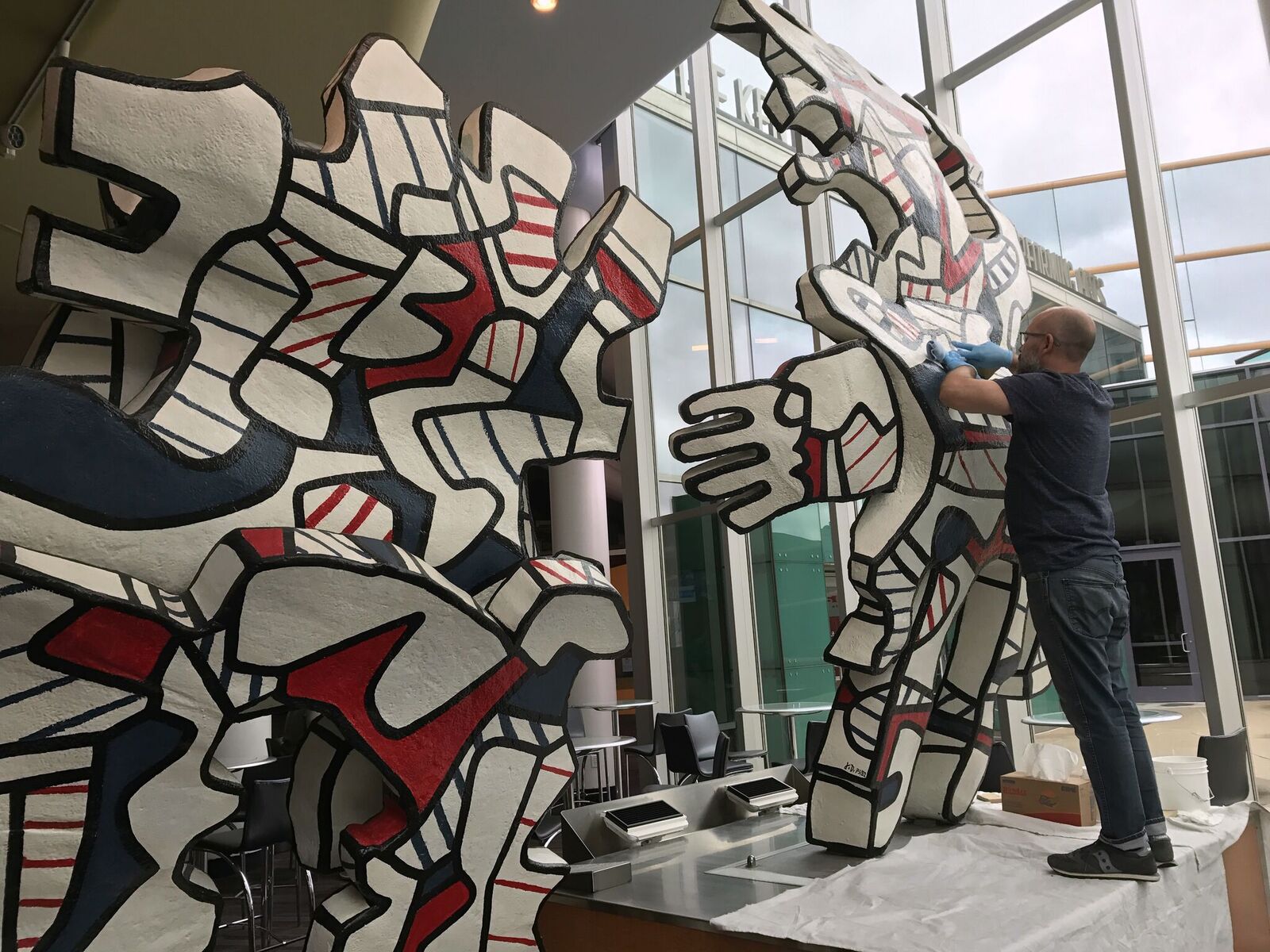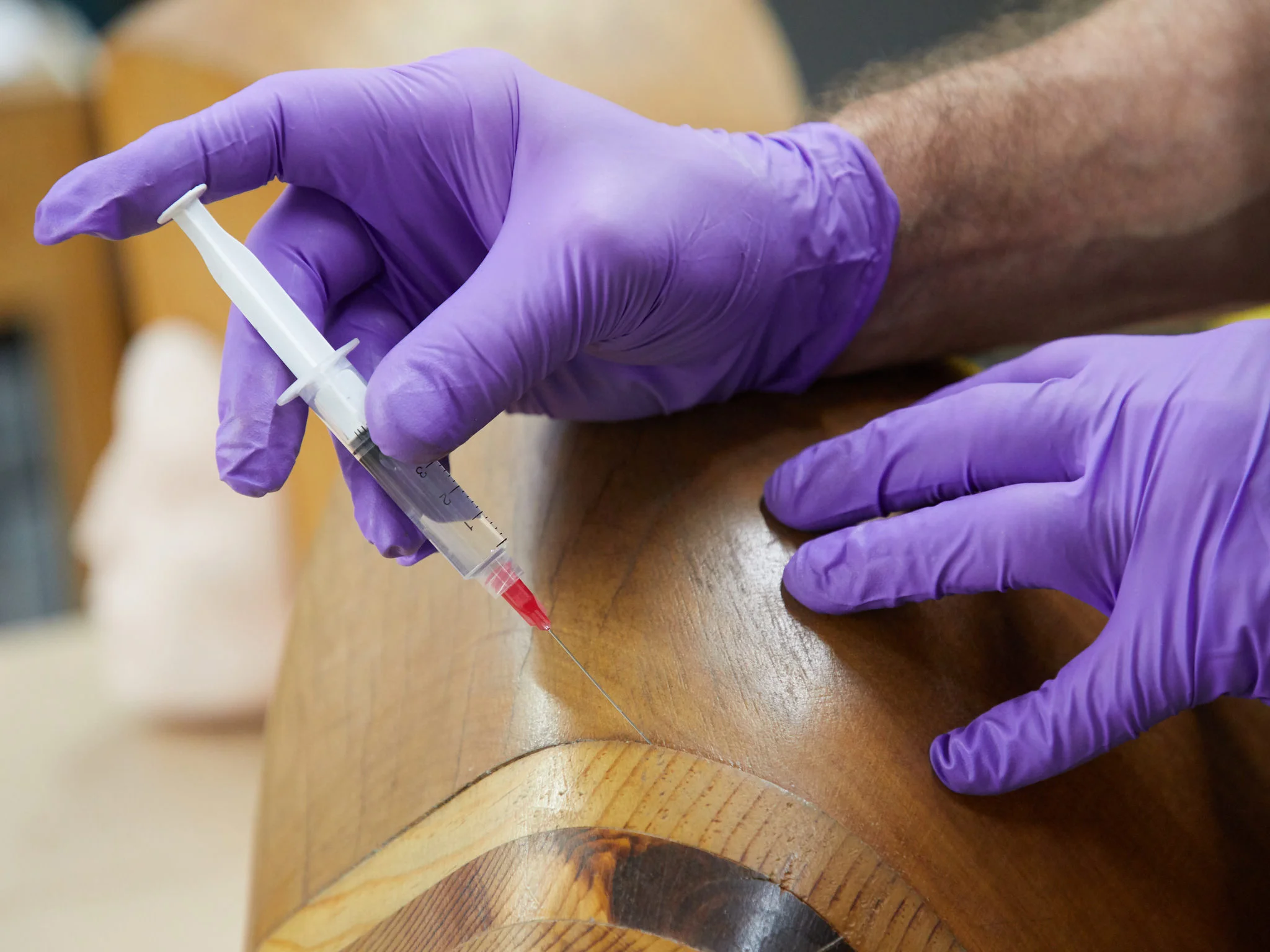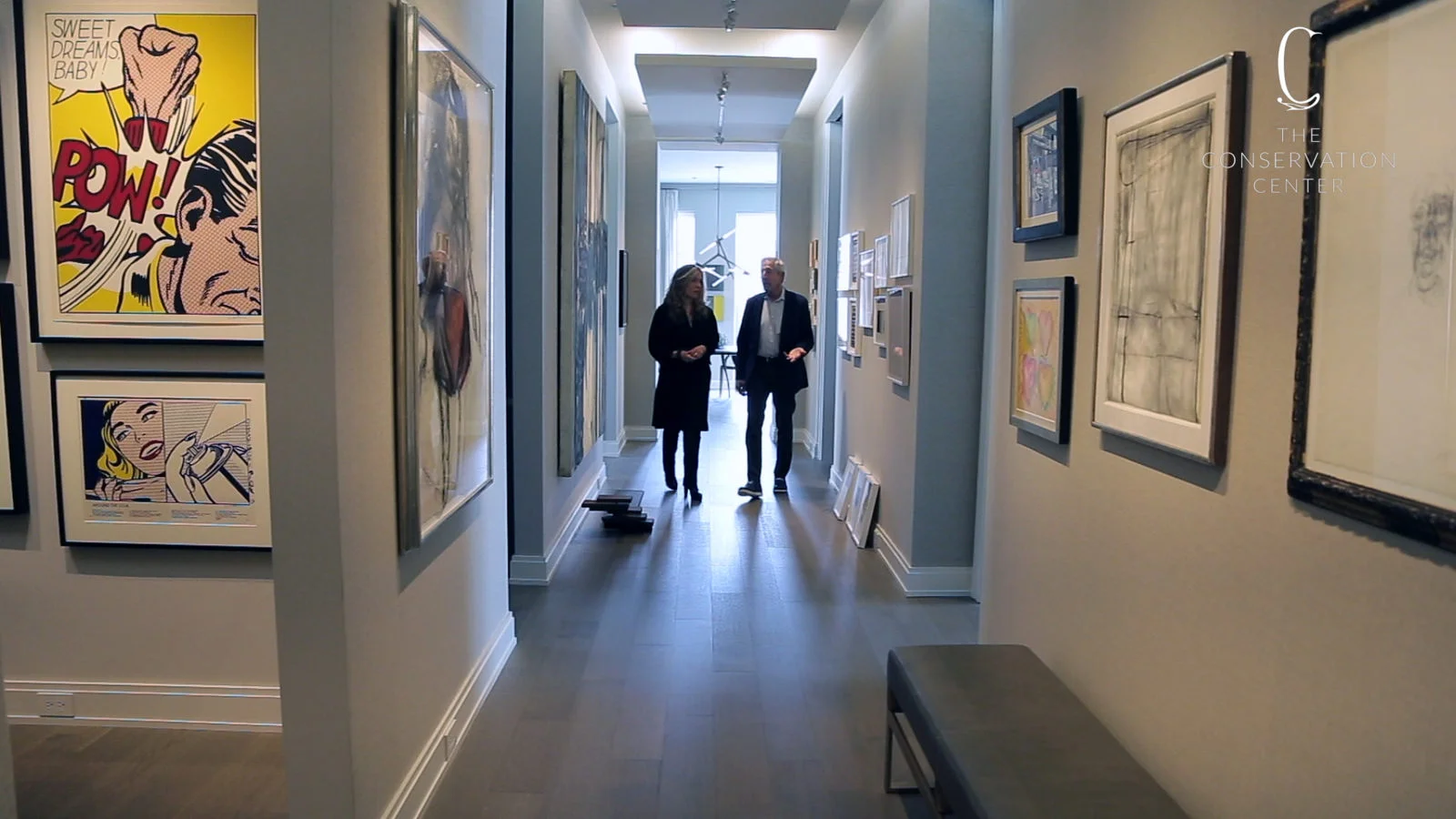This past August, two conservators from The Conservation Center traveled to Louisville, KY to conserve the vibrant collection of public art on display at The Kentucky Center for the Performing Arts.
The Kentucky Center seeks to cultivate the artistic scene in Louisville by providing programming ranging from music and theater performances to numerous outreach and education services, The permanent artworks displayed throughout The Kentucky Center feature a number of notable artists including Alexander Calder, John Chamberlain, Edgar Degas, and Joan Miro.





















